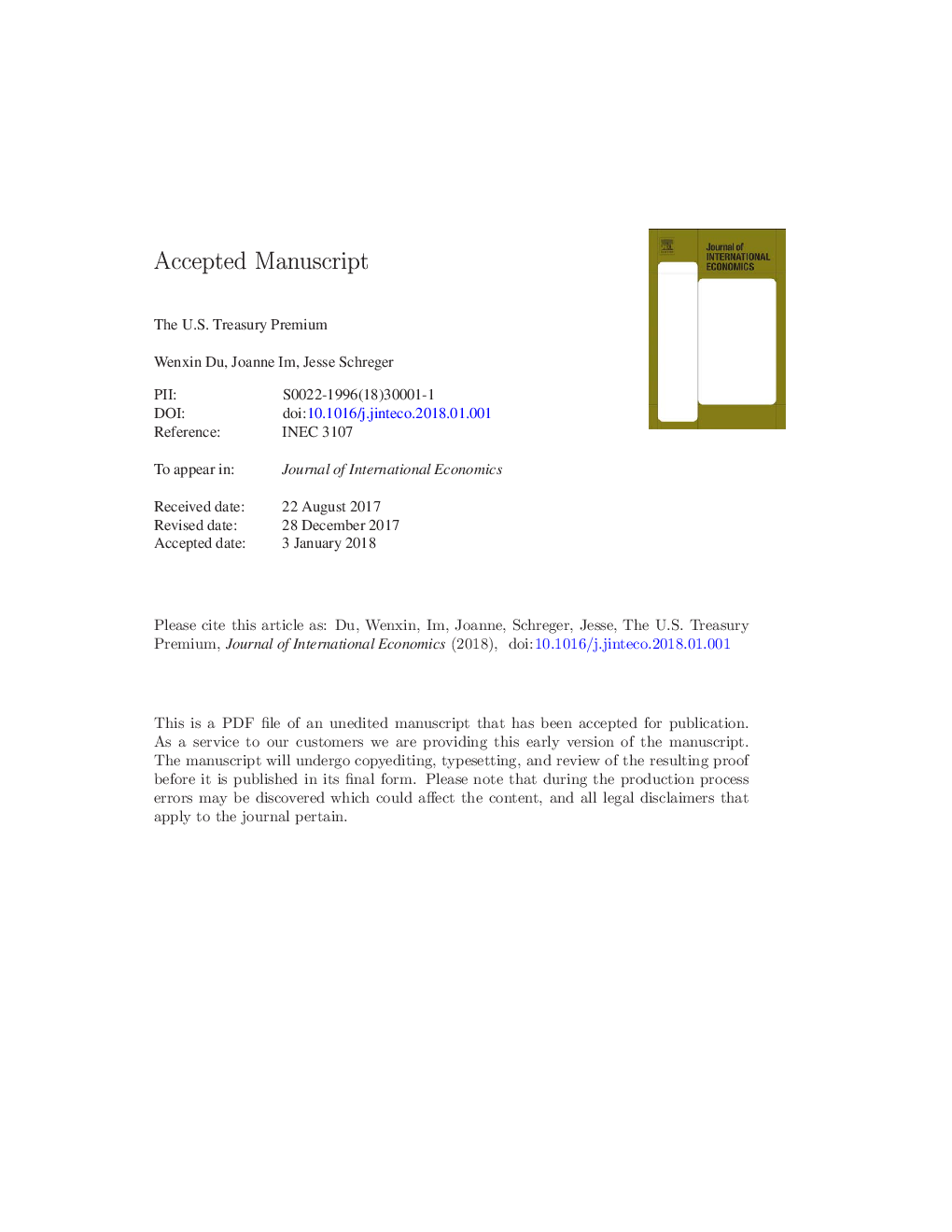| Article ID | Journal | Published Year | Pages | File Type |
|---|---|---|---|---|
| 7363914 | Journal of International Economics | 2018 | 49 Pages |
Abstract
We quantify the difference in the convenience yield of U.S. Treasuries and government bonds of other developed countries by measuring the deviation from covered interest parity between government bond yields. We call this wedge the “U.S. Treasury Premium.” We document a secular decline in the U.S. Treasury Premium at medium to long maturities. The five-year U.S. Treasury Premium averages approximately 21 basis points prior to the Global Financial Crisis, increases up to 90 basis points during the crisis, and disappears after the crisis with the post-crisis mean at â8 basis points. Meanwhile, the short-term U.S. Treasury Premium remains positive post-crisis. We discuss the impact of sovereign credit risk, foreign exchange swap market frictions, and the relative supply of government bonds on the U.S. Treasury Premium
Related Topics
Social Sciences and Humanities
Economics, Econometrics and Finance
Economics and Econometrics
Authors
Wenxin Du, Joanne Im, Jesse Schreger,
